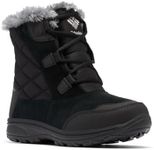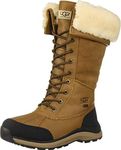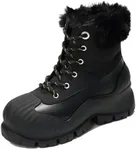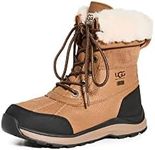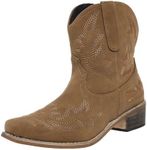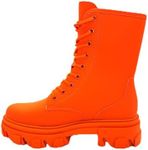Buying Guide for the Best Winter Boots For Women For Extreme Cold
When it comes to choosing winter boots for women for extreme cold, it's essential to focus on features that will keep your feet warm, dry, and comfortable in harsh conditions. The right pair of boots can make a significant difference in your overall comfort and safety during the winter months. Here are some key specifications to consider when selecting the best winter boots for extreme cold.InsulationInsulation is the material inside the boots that helps retain heat and keep your feet warm. This is crucial for extreme cold conditions. Common insulation materials include Thinsulate, wool, and synthetic fibers. Thinsulate is lightweight and provides excellent warmth without bulk, making it suitable for very cold temperatures. Wool is a natural insulator that offers good warmth and moisture-wicking properties. Synthetic fibers are often used in budget-friendly options and can also provide adequate warmth. When choosing insulation, consider the temperature range you'll be facing. For extremely cold conditions, look for boots with higher insulation ratings, such as 400 grams or more.
WaterproofingWaterproofing ensures that your feet stay dry in wet and snowy conditions. This is important because wet feet can quickly become cold feet, leading to discomfort and potential frostbite. Waterproof boots are typically made with materials like Gore-Tex or have a waterproof membrane. Some boots also feature waterproof leather or rubber. When selecting waterproof boots, consider the type of activities you'll be doing. If you'll be in deep snow or slushy conditions, opt for boots with a higher level of waterproofing and sealed seams to prevent water from seeping in.
Sole and TractionThe sole and traction of winter boots are critical for maintaining stability and preventing slips on icy or snowy surfaces. Look for boots with rubber soles that provide good grip and are designed with deep lugs or treads. Vibram soles are a popular choice for their durability and excellent traction. When evaluating soles, consider the type of terrain you'll be navigating. For icy conditions, boots with specialized ice grips or spikes can offer additional security. If you'll be walking on mixed terrain, a versatile sole with a good balance of grip and flexibility is ideal.
Fit and ComfortFit and comfort are essential for ensuring that you can wear your boots for extended periods without discomfort. A proper fit should allow for some wiggle room for your toes and accommodate thick socks if needed. Look for boots with adjustable features like laces, straps, or buckles to customize the fit. Additionally, consider the boot's weight and flexibility. Heavier boots may offer more protection but can be cumbersome, while lighter boots are easier to move in but may provide less insulation. Try on boots with the socks you plan to wear and walk around to ensure they feel comfortable and supportive.
Height and CoverageThe height of the boots determines how much of your leg is protected from the cold and snow. Taller boots, such as those that reach mid-calf or higher, offer more coverage and are ideal for deep snow or very cold conditions. Shorter boots, like ankle boots, are easier to put on and take off but may not provide as much warmth or protection. When choosing the height, consider the typical snow depth and your activity level. If you'll be trudging through deep snow, opt for taller boots. For more casual use or less snowy conditions, shorter boots may suffice.


